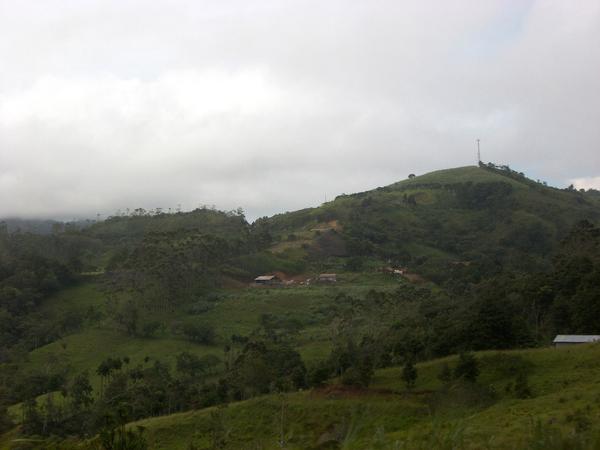The Darién Gap is a dense swath of jungle that separates Panama and Colombia, and effectively North from South America. Darién is the most eastern province of Panama and home to a vast array of incredibly rare flora and fauna, indigenous tribes and prime jungle forest habitat, much of which is protected under the Darién National Park (covering around 5,790sq km (2,235 mi sq) and the biggest in Central America).
The area has somewhat of a mystique tied to it. It is one of the least visited places in Central America and has remained largely untouched for hundreds of years. This is in part due to its incredibly difficult landscape; the jungle ecosystem is incredibly dense. Building roads in this part of Panama is extremely costly and would have an exorbitant environmental impact.

The jungle ecosystem is incredibly dense in the Darién. Photo courtesy Jonathon P.
The “gap” in the Darién province refers to the more than 160km (99 mi) stretch of land that separates Panama and Colombia where there is no road. The Gap is probably most famous because it is the only break in the Pan-American Highway. Stretching from Alaska to Argentina, this epic highway boasts the title of the longest road in the world (48,000km or 29,825 mi) with one slight interruption: the Darién.
The area is also famous for adventurers attempting to cross the Gap on foot or by truck (the first successful vehicular expedition was completed in 1960). It is a formidable undertaking as the jungle is known to be virtually impenetrable and also is said to harbour fugitive groups of Colombian anti-government forces looking to avoid the law. On top of these challenges the Darién is a mountainous and tropical landscape, which means lots of steep hills, rain, mud and swampland.

The light from sunrise hits the river water in the Darién. Photo courtesy Brian G.
Despite its call to the adventurous expedition maker with a desire to claim a title, Darién National Park remains a true beauty of nature, with rivers twisting, turning and working in unison to sculpt a stunning path, with lush hilltops and distant peaks, with vast forests that stretch as far as the eye can see, and an ecosystem that supports large numbers of wildlife, including exotic birds and rare plants. The park is a wonder of nature.
It is possible to access the Darién at many different points along the final stretches of the Pan-American Highway in Panama. Most people get off at Yaviza where you can take a boat to El Real, or you can get off the bus at Metei and transfer (again by boat) to the capital of the province, La Palma. Adding to the mystique is that there is no road to the capital. To get there, one has to go by water. And, in the Darién that means by Piragua (dugout) canoe. La Palma is also one of the last places to inform Panamanian immigration if you are planning the traverse to Colombia.

A commuter Piragua boat makes its way from "a" to "b". Photo courtesy Rita W.

It's just another day in La Palma. Photo courtesy Rita W.
The Darién is a formidable and intriguing part of our world that luckily for us (and the people living there) has remained more or less the same as it was hundreds of years ago. It can’t go unsaid that although the Darién is secluded, it hasn’t been able to escape logging companies and their destitution of prime forest, guerrilla forces and random kidnappings, mining and resource extracting, and slowly but surely, human development. But above all these threats, the jungle still flourishes and the natural habitat of the Darién jungle commands its surroundings.
Getting There
G Adventures runs a number of departures in Panama encompassing a wide range of departure dates and activities to cater to different tastes. We’re thrilled at the prospect of showing you this big blue planet of ours — check out our small group trips here.























